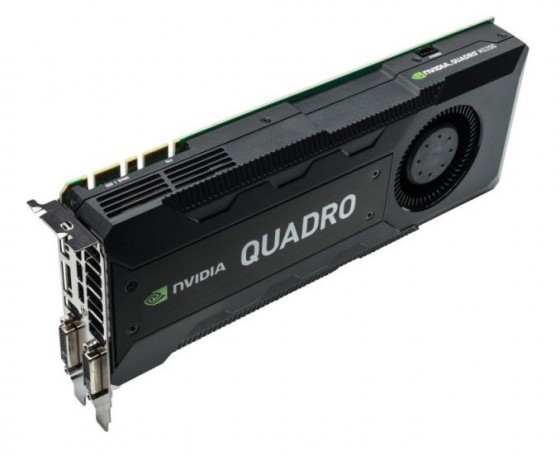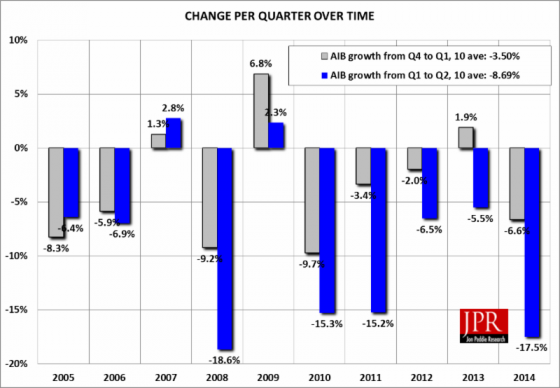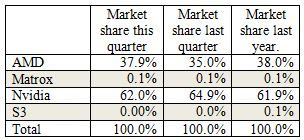Nvidia continues to hold a dominant market share position.
Jon Peddie Research (JPR) reports shipments of graphics add-in cards (AIBs) dropped 17.6% year-over-year in the second quarter of 2014. JPR says AIB shipments behaved according to past years with regard to seasonality, but the decrease was more than the 10-year average.

On a sequential basis (quarter-to-quarter), the market dropped 17.5 % (compared to the desktop PC market, which increased 1.3%). There were 11.5 million AIBs shipped during the quarter (ending June 30, 2014).
Nvidia continues to hold a dominant position in the market, at 62% of all boards shipped during the quarter. Nvidia’s shipments were down 21% sequentially; AMD units shipped were down 10.7% sequentially. Figures for other vendors were flat to declining.
The AIB market now has just four chip (GPU) suppliers, who also build and sell AIBs. The primary suppliers of GPUs are AMD and Nvidia. There are 50 AIB suppliers, the AIB OEM customers of the GPU suppliers, which they call“partners.” In addition to privately branded AIBs offered worldwide, about a dozen PC suppliers offer AIBs as part of a system, and/or as an option, and some that offer AIBs as separate aftermarket products.
JPR’s AIB Report tracks computer add-in graphics boards, which carry discrete graphics chips. AIBs used in desktop PCs, workstations, servers, and other devices such as scientific instruments. They are sold directly to customers as aftermarket products, or are factory installed. In all cases, AIBs represent the higher end of the graphics industry using discrete chips and private high-speed memory, as compared to the integrated GPUs in CPUs that share slower systemmemory.
However, in spite of the overall decline, which has been caused in part by tablets and embedded graphics, PC gaming momentum continues to build and is the bright spot in the AIB market.

The attach rate of AIBs to desktop PCs has declined from a high of 63% in Q1 2008 to 36% in 2014 2Q, down from 44% last quarter.The overall PC desktop market increased quarter-to-quarter including double-attach—the adding of a second (or third) AIB to a system with integrated processor graphics—and to a lesser extent, dual AIBs in performance desktop machines using either AMD’s Crossfire or Nvidia’s SLI technology.
The change from quarter to quarter was significantly greater less than last year, down -17.5% this quarter compared to down -5.5% a year ago, as shown below.

Jon Peddie Research’s AIB Report is available now in both electronic and hard copy editions and sells for $1,500. Included with this report is an Excel workbook with the data used to create the charts, the charts themselves, and supplemental information. The annual subscription price for JPR’s AIB Report is $4,000 and includes four quarterly issues. Full subscribers to JPR services receiveTechWatch (the company’s bi-weekly report) and are eligible for a 10% discount. Bundle packages are also available. For information about purchasing the AIB Report, please call 415/435-9368 or visit the Jon Peddie Research website at www.jonpeddie.com.





